Automate Engineering Workflows for Smarter, Faster Results
Updated on : 13 May 2025

Image Source: google.com
Table Of Contents
- 1. Introduction
- 2. What Is the Meaning of Automation Engineering
- 3. How Does Automation Engineering Work
- 4. What Is Industrial Automation and Its Scope
- 5. How Automation Technologies Are Implemented
- 6. Key Components of an Automation System
- 7. Automation Engineering vs Traditional Engineering
- 8. Using Automation to Improve Business Efficiency
- 9. Choosing the Right Automation Tools for Your Industry
- 10. How Machines Communicate in Automated Systems
- 11. Business Benefits of Automation Engineering Solutions
- 12. Automation vs Manual Processes: Whats Better for You
- 13. FAQs
Table Of Contents
Introduction
Automate engineering workflows for smarter, faster results and unlock the true potential of innovation. Say goodbye to time-consuming tasks and hello to streamlined processes, improved accuracy, and faster project delivery—all powered by intelligent automation.
What Is the Meaning of Automation Engineering
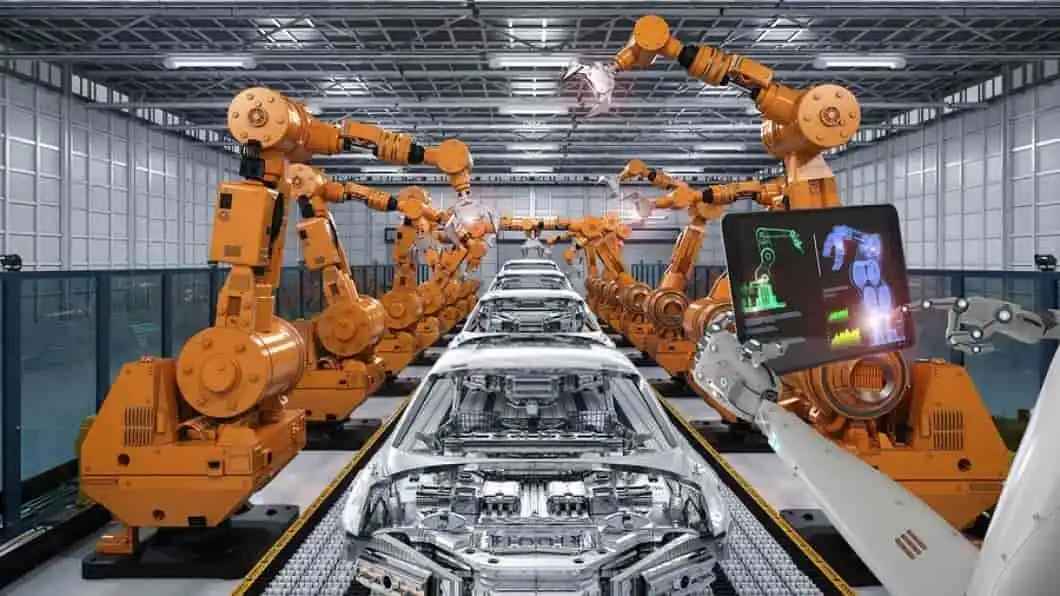
Image Source: google
Automation engineering is the field that focuses on designing, developing, and maintaining systems that reduce human effort and increase efficiency through machines and technology.
🛠️ Key Points:
- 🤖 Technology-Driven: Uses machines, software, and control systems to perform tasks automatically.
- ⚙️ System Integration: Connects different devices and systems to work seamlessly.
- ⏱️ Efficiency Boost: Saves time and improves accuracy in repetitive tasks.
- 💼 Business Use: Widely used in manufacturing, IT, healthcare, and logistics.
- 🌍 Global Impact: Plays a major role in industrial growth and smart solutions.
💡 Automate engineering workflows for smarter, faster results by minimizing manual work and optimizing productivity.
🚀 Companies that automate engineering workflows for smarter, faster results stay competitive and agile in today’s fast-paced industries.
How Does Automation Engineering Work
| 🔍 Aspect | 📌 Description |
|---|---|
| Sensors | Collect data from machines or environments. |
| Controllers | Decide actions based on input data. |
| Actuators | Perform physical actions like moving parts. |
| Programming | Defines logic for automated operations. |
| Integration | Connects various devices and systems. |
| Monitoring | Tracks system performance in real-time. |
| Feedback Loops | Adjust operations based on outputs. |
| Safety Systems | Ensure safe functioning of machines. |
| Remote Control | Manage systems from anywhere. |
| Optimization | Improves speed, accuracy, and efficiency. |
Explore Software Development services in Hexadecimal Software
What Is Industrial Automation and Its Scope
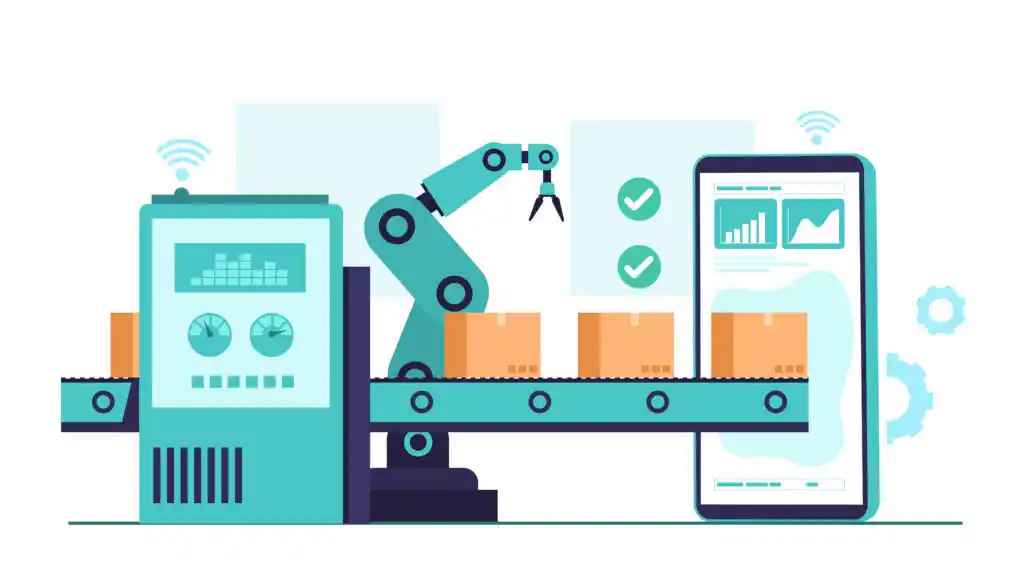
Image Source: google
| 🏭 Concept | 📌 Description |
|---|---|
| Industrial Automation | Use of control systems like computers and robots to handle industrial processes automatically. |
| Manufacturing | Automates repetitive tasks on assembly lines for faster production. |
| Process Control | Monitors and adjusts variables like temperature, pressure, and flow in industries. |
| Robotics | Uses programmable machines to perform complex or hazardous tasks. |
| SCADA Systems | Supervises and controls industrial processes remotely. |
| PLC Systems | Programmable Logic Controllers automate machinery and production lines. |
| Quality Control | Ensures consistent product standards with minimal human error. |
| Energy Management | Optimizes energy use for cost savings and efficiency. |
| Smart Factories | Integrates IoT and AI for intelligent, adaptive manufacturing. |
| Global Scope | Used across industries like automotive, food, pharmaceuticals, and electronics. |

Need help navigating the SDLC for your project?
How Automation Technologies Are Implemented
Automation technologies are implemented by integrating hardware, software, and control systems to perform tasks with minimal human input. This process increases efficiency, accuracy, and productivity.
🔑 Key Steps:
- 🧠 Planning: Identify tasks that can be automated and define goals.
- 🛠️ System Design: Choose the right tools like sensors, controllers, and actuators.
- 💻 Programming: Develop software to control the automation process.
- 🔗 Integration: Connect automation systems with existing machines or networks.
- 🧪 Testing: Ensure everything works smoothly and safely.
- 🚀 Deployment: Launch the automation system in the real-world environment.
- 🔁 Monitoring & Optimization: Continuously track performance and make improvements.
💡 Companies that automate engineering workflows for smarter, faster results achieve better productivity and reduced costs.
📈 To stay competitive, many industries automate engineering workflows for smarter, faster results using these step-by-step methods.
Key Components of an Automation System
| 🔑 Component | 📌 Description |
|---|---|
| Sensors | Detect physical parameters (e.g., temperature, pressure) and convert them into electrical signals. |
| Actuators | Perform actions based on signals, like moving a robot arm or opening a valve. |
| Controllers | Process sensor data and send commands to actuators to control processes. |
| Human-Machine Interface (HMI) | Allows operators to monitor and interact with the automation system. |
| Programmable Logic Controllers (PLC) | Centralized control units that execute control logic for automation. |
| Communication Networks | Transmit data between components (e.g., IoT, SCADA, industrial protocols). |
| Software & Algorithms | Process data and execute control strategies or optimizations. |
| Power Supply | Provides necessary energy to operate sensors, actuators, and control systems. |
| Feedback Mechanisms | Ensure system adjustments based on real-time data and performance. |
You Might Also Like
Automation Engineering vs Traditional Engineering
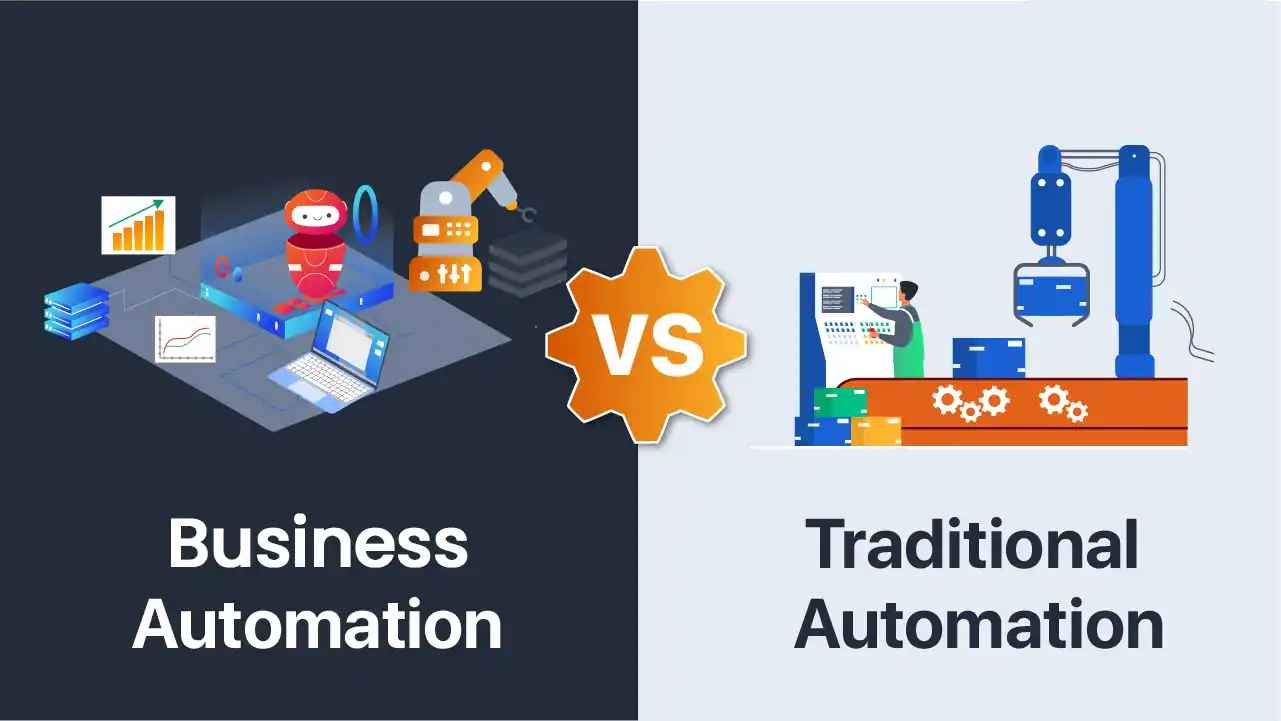
Image Source: google
| 🔧 Aspect | ⚙️ Automation Engineering | 🛠️ Traditional Engineering |
|---|---|---|
| Approach | Relies on automated systems and technologies. | Manual processes with human oversight. |
| Efficiency | Higher speed and accuracy with fewer errors. | Slower with higher potential for human error. |
| Cost | Initial investment may be higher, but long-term savings. | Lower initial cost but higher operational costs. |
| Flexibility | Easily adaptable to changes in technology. | More rigid and slower to adapt to changes. |
| Complexity | Requires technical expertise to design and maintain systems. | Can be simpler but requires more labor. |
| Safety | Reduces human involvement in hazardous tasks. | Involves more human intervention in dangerous conditions. |
| Maintenance | Automated monitoring and predictive maintenance reduce downtime. | Manual inspections and reactive maintenance required. |
| Scalability | Easily scalable by adding more machines or systems. | Scalability can be more challenging and resource-intensive. |
| Integration | Easily integrates with modern IoT and AI systems. | Difficult to integrate with advanced technologies. |
| Control | Centralized control via software and automated processes. | Control is largely manual or semi-automated. |
| Productivity | Increases overall productivity by automating repetitive tasks. | Depends on human efficiency and productivity. |
| Quality | Consistent product quality due to precise automation. | Quality can vary due to human factors. |
Using Automation to Improve Business Efficiency
Automation helps businesses streamline operations, reduce costs, and increase productivity by replacing manual tasks with technology-driven solutions.
🔑 Key Benefits:
- 💡 Faster Processes: Automates repetitive tasks, leading to quicker execution and reduced lead time.
- 📊 Enhanced Accuracy: Reduces human errors, ensuring consistent and reliable results.
- 💰 Cost Savings: Lowers labor costs and minimizes resource wastage.
- 🔄 Consistency: Delivers uniform outcomes in manufacturing, sales, and customer service.
- 🌱 Scalability: Easily scales operations without the need for additional workforce.
- 🚀 Improved Productivity: Frees up time for employees to focus on more complex, value-added tasks.
- 📈 Data-Driven Insights: Provides real-time data to help businesses make informed decisions.
- ⚡ Increased Flexibility: Quickly adapts to changes in market demand or production requirements.
- 🛡️ Enhanced Safety: Reduces the need for human intervention in dangerous tasks.
- 🌍 Competitive Advantage: Enables faster response to market needs, staying ahead of competitors.
By using automation, businesses can automate engineering workflows for smarter, faster results, improving overall performance and agility.
Choosing the Right Automation Tools for Your Industry
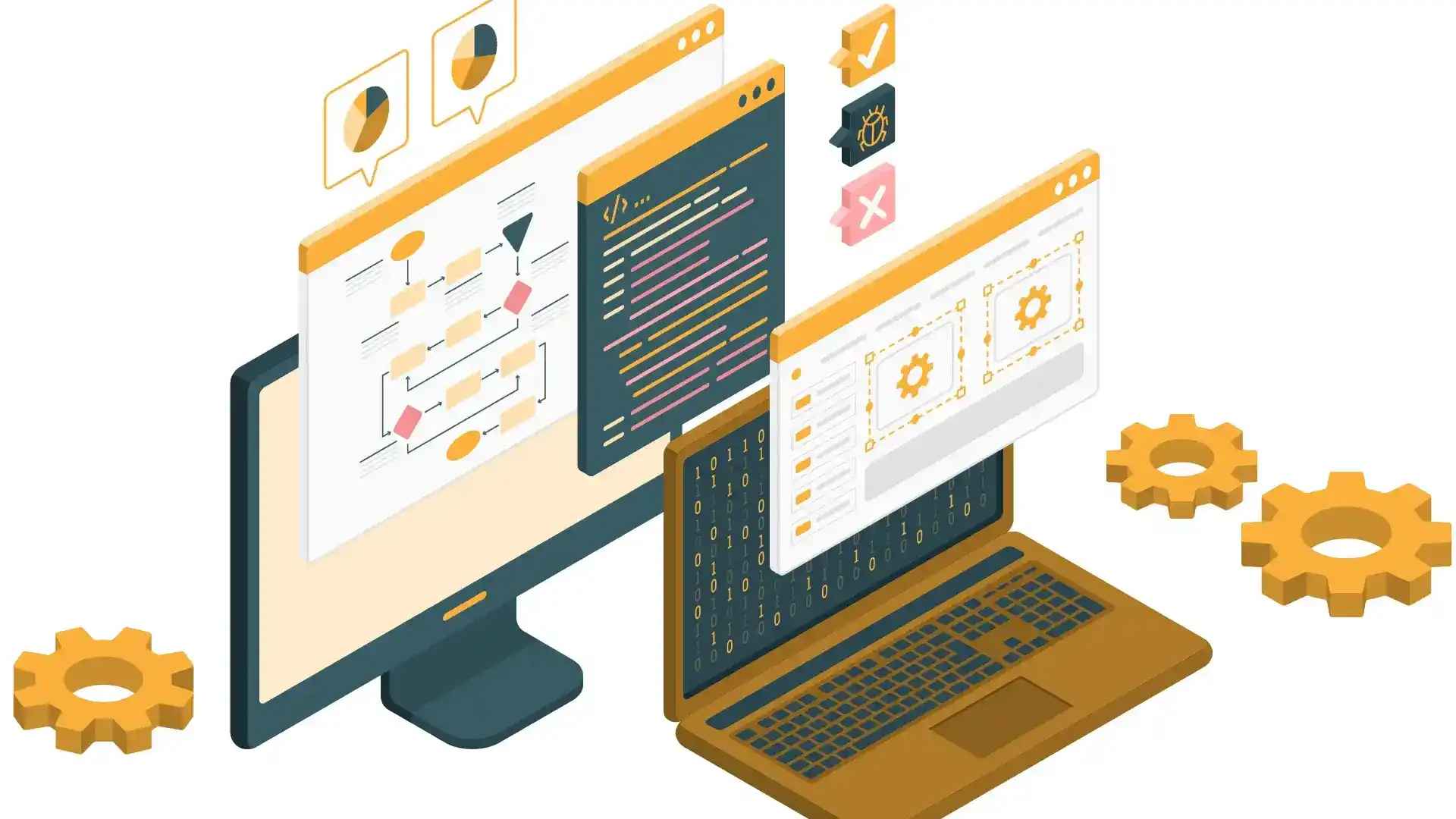
Image Source: google
| 🔧 Industry | 📌 Key Automation Tools | 💡 Benefits |
|---|---|---|
| Manufacturing | Robotic Arms, PLCs, SCADA Systems | Improves production speed, reduces human error, and ensures quality control. |
| Healthcare | Automated Lab Systems, Medical Robotics, AI Diagnostics | Enhances patient care, reduces errors, and speeds up diagnostics. |
| Retail | POS Systems, Inventory Management, Automated Checkout | Streamlines operations, improves customer experience, and reduces costs. |
| Logistics | Automated Warehouses, Drones, GPS Tracking | Improves efficiency, accuracy, and tracking of shipments. |
| Food & Beverage | Packaging Automation, Production Line Robotics | Increases production speed, consistency, and hygiene standards. |
| Automotive | Assembly Line Robots, 3D Printing, CNC Machines | Boosts precision, reduces manufacturing time, and enhances flexibility. |
| Finance | RPA (Robotic Process Automation), AI Chatbots | Improves accuracy, reduces fraud, and speeds up transaction processing. |
| Energy | Smart Grids, Predictive Maintenance Tools | Optimizes energy distribution, reduces downtime, and lowers operational costs. |
| Construction | Drones, BIM (Building Information Modeling), 3D Printing | Enhances project efficiency, reduces waste, and improves safety. |
| Telecommunications | Network Automation, AI-driven Customer Support | Improves network management, customer experience, and service reliability. |
How Machines Communicate in Automated Systems
| 🔗 Communication Method | 📌 Description |
|---|---|
| Wired Communication | Uses physical cables (e.g., Ethernet, RS-232) for reliable, fast data transfer. |
| Wireless Communication | Utilizes radio waves, Wi-Fi, Bluetooth, or Zigbee for remote data exchange. |
| Fieldbus Systems | Specialized networks (e.g., Profibus, Modbus) for real-time control and data exchange. |
| IoT (Internet of Things) | Devices connect to the internet, sending and receiving data for monitoring and control. |
| SCADA Systems | Supervisory control and data acquisition systems for remote monitoring and control. |
| PLC Communication | Programmable Logic Controllers (PLCs) communicate with sensors and actuators to control machinery. |
| MQTT Protocol | Lightweight messaging protocol for devices to exchange data, commonly used in IoT. |
| CAN Bus | Controller Area Network used for real-time communication in automotive and industrial systems. |
| OPC UA | Open Platform Communications Unified Architecture enables secure and reliable machine communication. |
| Ethernet/IP | Industrial protocol used for connecting machines and devices over Ethernet networks for automation. |

Looking to integrate advanced solutions for your software development?
Business Benefits of Automation Engineering Solutions
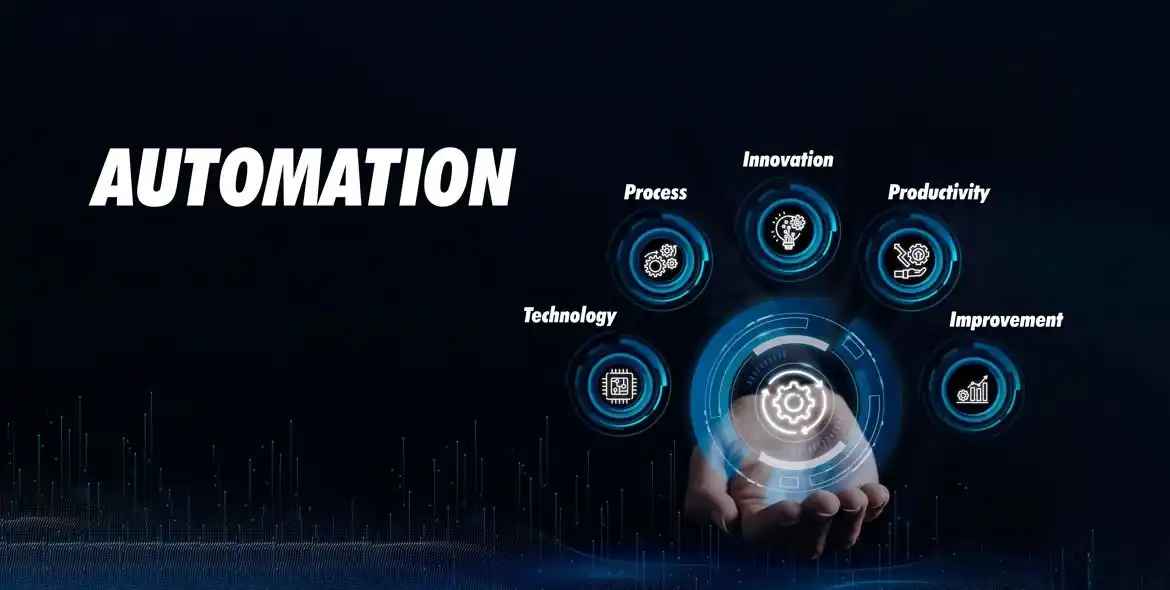
Image Source: google
Automation engineering solutions help businesses achieve higher efficiency, reduce operational costs, and improve overall performance by integrating advanced technologies into their processes.
🔑 Key Benefits:
- 💡 Increased Productivity: Automates repetitive tasks, allowing employees to focus on more value-added work.
- 🕒 Time Savings: Speeds up processes, reducing the time required for manufacturing, testing, or service delivery.
- 💰 Cost Reduction: Lowers labor and operational costs by minimizing the need for manual interventions.
- ⚙️ Enhanced Accuracy: Reduces human error and ensures precision in tasks such as assembly or data entry.
- 🔄 Consistency: Provides consistent product quality and service delivery, reducing variability.
- 🌱 Scalability: Easily scales systems and processes to handle growing demands without major infrastructure changes.
- 🌍 Global Competitiveness: Helps companies stay ahead of competitors by improving response time and adapting to market changes.
- 🛡️ Improved Safety: Automates dangerous tasks, reducing risk to human workers.
- 📊 Data-Driven Insights: Automation systems collect data that can be used to optimize future business decisions.
- 🧩 Seamless Integration: Integrates easily with other modern technologies (IoT, AI) for smarter operations.
By leveraging automation engineering solutions, businesses can automate engineering workflows for smarter, faster results, making their operations more efficient and cost-effective.
Automation vs Manual Processes: Whats Better for You
| 🔧 Aspect | ⚙️ Automation | 🛠️ Manual Processes |
|---|---|---|
| Speed | Faster execution of tasks with minimal delays. | Slower, as tasks are done by hand and require more time. |
| Accuracy | Higher precision with minimal human errors. | Prone to human error, leading to inconsistencies. |
| Cost | Higher initial investment, but long-term savings. | Lower upfront cost, but higher operational costs. |
| Flexibility | Easily adaptable to changes and can scale quickly. | Less adaptable and requires significant rework to scale. |
| Consistency | Produces uniform results every time. | Results can vary due to human factors and fatigue. |
| Safety | Reduces human involvement in hazardous tasks. | Higher risk of injury or mistakes in dangerous environments. |
| Maintenance | Requires regular system checks and updates for optimal performance. | Requires more manual effort to maintain quality. |
| Monitoring | Continuous monitoring through automated systems. | Manual checks and interventions are needed to ensure quality. |
| Complexity | Requires technical expertise and upfront planning. | Simple to implement but requires a larger workforce. |
| Data Collection | Automatic data collection for better analysis and decision-making. | Manual data collection, prone to errors and delays. |
| Scalability | Easily scalable by adding more automation tools. | Scaling requires hiring more workers and increasing resources. |
| Long-Term Benefit | Higher ROI over time with increased productivity and reduced errors. | Lower ROI and limited long-term benefits due to increasing operational costs. |
FAQs
Q.1. What is automation in engineering?
A : Using technology to perform tasks with minimal human input.
Q.2. How does automation improve business efficiency?
A : It speeds up tasks, reduces errors, and saves time.
Q.3. What are the main benefits of automation?
A : Increased speed, accuracy, and cost savings.
Q.4. Is automation expensive?
A : Initial costs are high, but long-term savings are significant.
Q.5. Can automation be used in all industries?
A : Yes, it works in industries like manufacturing, healthcare, and retail.
Q.6. How does automation impact employees?
A : It frees employees from repetitive tasks, allowing focus on more valuable work.
Q.7. What tools are used for automation?
A : PLCs, robotic arms, AI systems, and automation software.
Q.8. Is automation scalable?
A : Yes, it can easily expand as business grows.





